-
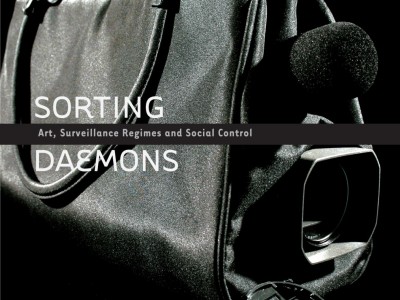 0
0Sorting Daemons: Art, Surveillance Regimes and Social Control
Exhibition | Curated by Jan Allen and Sarak EK Smith, 2010
- Brenda Goldstein, Panopticon, 2003, DVD.
- Antonia Hirsch, The Invisible Hand (after Adam Smith), 2009, surveillance mirrors.
- Dave Kemp, Data Collection, 2009, photographic installation.
- Tran T. Kim-Trang, Ocularis: Eye Surrogates, 1997, DVD.
- Germaine Koh and Ian Verchere, Broken Arrow, version 2, 2009, electronics and custom software.
- Arnold Koroshegyi, Rupture, 2008, 6-minuted looped video installation.
- Ruthann Lee, Trying to Concentrate, 2004, DVD.
- Michael Lewis, Some will take more prodding. Others will be more difficult, 2008, oil on canvas.
- Jill Magid, Evidence Locker: Trust, 2004, DVD and book.
- Walid Ra’ad, Part 3: Miraculous Beginnings, The Dead Weight of a Quarrel Hangs, 1999, DVD.
- Kathleen Ritter, Hidden Camera, 2006, Pigment print.
- David Rokeby, Sorting Daemon, 2003, computer, LCD screen, camera, and projection.
- Tom Sherman, SUB/EXTROS (1), SUB/EXTROS (2), SUB/EXTROS (3), 2001, DVD.
- Cheryl Sourkes, Cam Cities, Virtual Toronto, 2001, inkjet on unstretched exterior vinyl banner, steel bar.
- John Watt, Scannex Man, 1981, DVD.
-
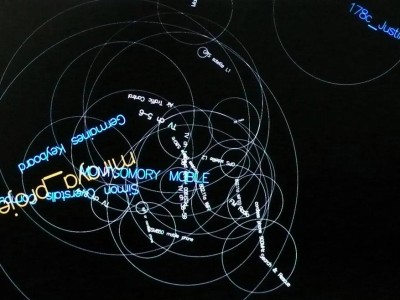
-
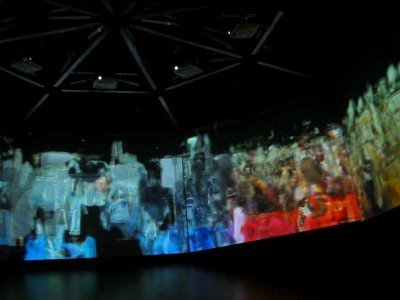
-
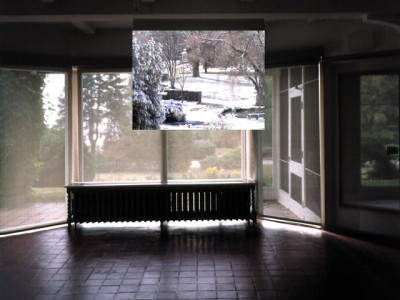
-
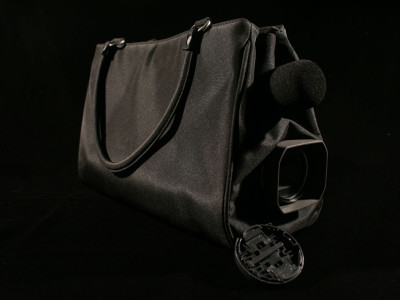
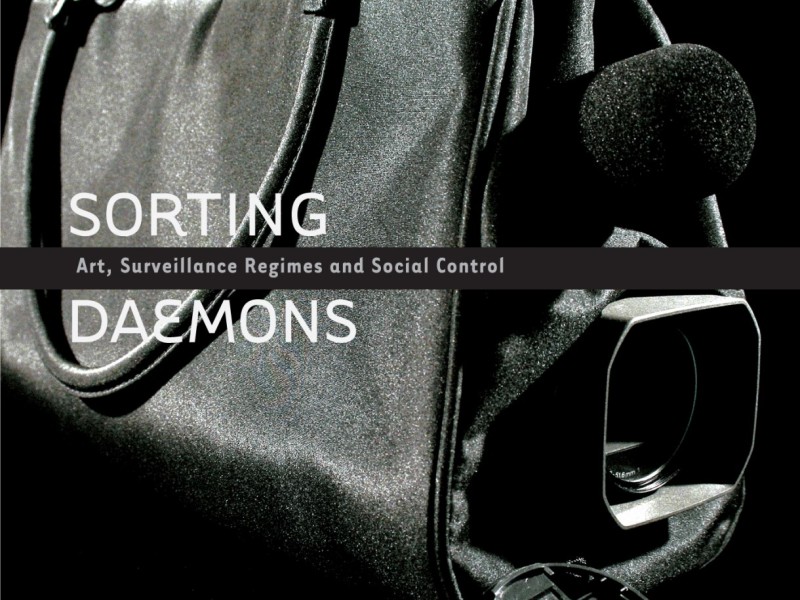
Cover of exhibition catalogue, 2010.
Sorting Daemons: Art, Surveillance Regimes and Social Control
Exhibition | Curated by Jan Allen and Sarak EK Smith, 2010
Mounted as a partnered project between the Art Centre and The New Transparency: Surveillance and Social Sorting at Queen’s University. | Agnes Etherington Art Centre, Kingston, ON.
Sorting Daemons was mounted at the Agnes Etherington Art Centre at Queen's University (Kingston) from 16 January to 18 April 2010. From the exhibition’s publicity release: “Information-gathering systems increasingly affect our lives, tracking our movement and consumer preferences. Such “sorting daemons” reinforce existing streams of influence and quietly create new ones. The artists in this exhibition take measure of our relationship to surveillance by addressing its social, political and aesthetic dimensions.” This exhibition was developed in partnership with The New Transparency and opened in conjunction with "Camera Surveillance in Canada: A Research Workshop" at Queen's University, Kingston that took place 14-16 January 2010.Artists and artworks:
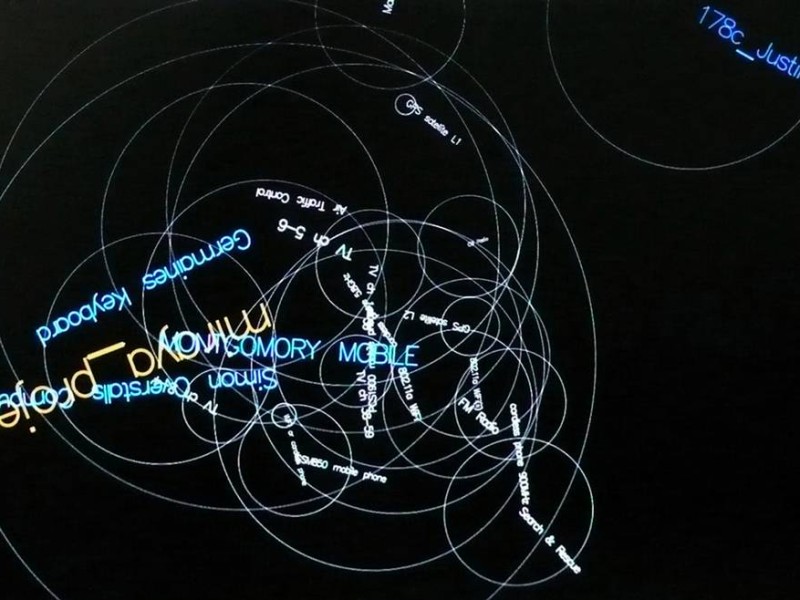
Germain Koh and Ian Verchere, Broken Arrow, 2009. Electronics and custom software. Image courtesy of the artists. © Germaine Koh and Ian Verchere.
Website:
http://germainekoh.com/
Broken Arrow
Artwork | Germaine Koh with Ian Verchere, 2008 and 2009 versions
Electronics and custom software | Various exhibitions, including the group exhibition “Sorting Daemons: Art, Surveillance Regimes and Social Control,” Agnes Etherington Art Centre, Kingston, ON, 2009
Created by Germaine Koh in collaboration with Ian Verchere, Broken Arrow uses sensing hardwares to track and trace blue-tooth technologies within a particular radius of the piece. The artwork captures the signals and electronic communication found in wireless devices such as Bluetooth, Wi-Fi, cellular phones, radio, and GPS, each registered signal marked by an auditory signal and a visual design. In this way, Broken Arrow makes visible these often invisible technologies and their signals. Koh’s installation reveals the often unseen ways information transmitted and shared via social devices, and reminds its viewers about the risks associated with social networks and privacy.Website:
http://germainekoh.com/
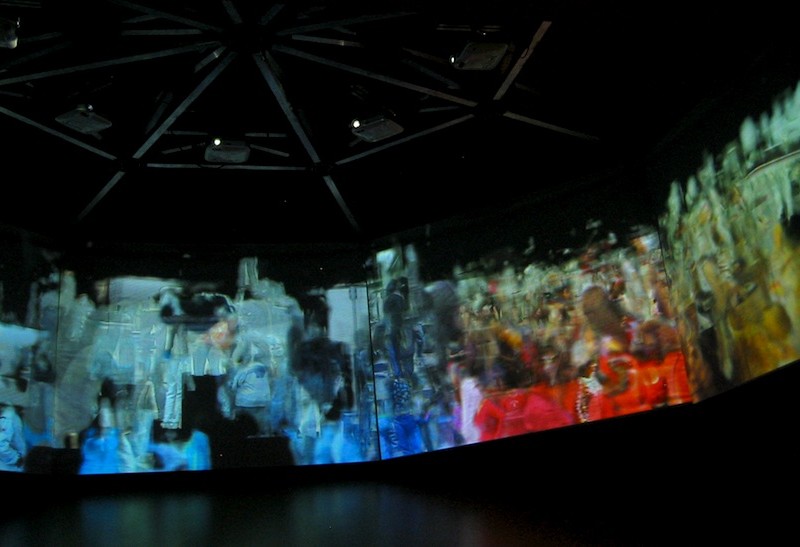
David Rokeby, Gathering, 2004. Video installation. Image courtesy of the artist. © David Rokeby.
Website:
http://www.davidrokeby.com/
Gathering
Artwork | David Rokeby, 2004
Video installation | Commissioned by the Art Gallery of Hamilton. Hamilton, ON for the Sao Paolo Bienal.
Commissioned by the Art Gallery of Hamilton, Gathering captures images of people outside the gallery space. A software programme detaches each person from background, then organizes particular aspects (heads, t-shirts, jeans, coats, hands) by colour. The elements are recontextualized following one of an available three sets of rules that determines how the images are put back together. Inside the gallery space, the resulting composite images are displayed on a circle of 8 video projections. Similar to his piece Sorting Daemon (2003), Gathering questions the somewhat arbitrary nature that dictates the ways in which automated systems survey, record, and organize information.Website:
http://www.davidrokeby.com/
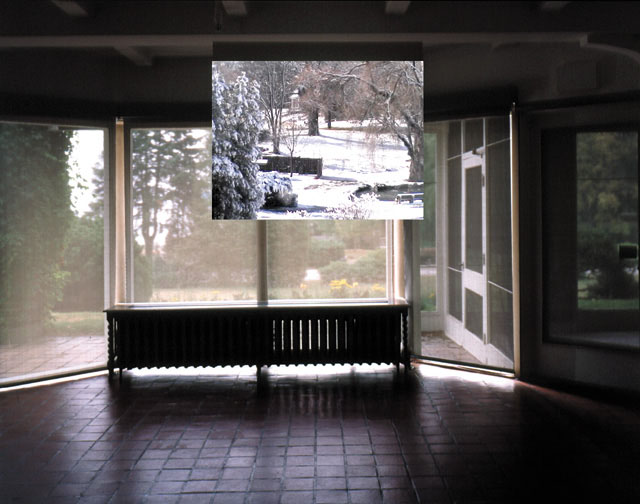
David Rokeby, Machine for Taking Time, 2001. Video projection, stored digital images, custom software. Image courtesy the artist. © David Rokeby.
Website:
http://www.davidrokeby.com/
Machine for Taking Time
Artwork | David Rokeby, 2001
Video projection, stored digital images, custom software | In multiple exhibitions, including “Early Delights/Deep Gardening,” curated by Su Ditta, Oakville Galleries, Oakville, ON.
Machine for Taking Time was commissioned by the Oakville Galleries for the show “Earthly Delights/Deep Gardening.” In the piece, Rokeby’s “machine” consists of a surveillance camera that takes 1081 still images of the gallery’s gardens along the same path daily. All of these images are archived, then stitched back together as a video that retains that same path, but uses images from different days. In the gallery, the video of the surveillance images is mounted next to a window overlooking the gardens, which juxtaposes the virtual and lived spaces. As its title suggests, this artwork highlights time not simply as an unfolding of chronological events or images, but rather, as a reconstruction of moments, memories, and illusions. This piece is a site-specific work that Rokeby recreated in several different locations. He also developed a newer incarnation of the piece, David Rokeby, Machine for Taking Time (Boul. Saint-Laurent) (2006-2007), commissioned by Daniel Langlois Foundation. More information on this latter piece can be found on the foundation’s website, http://www.fondation-langlois.org/e-art/e/machine-for-taking-time.html.Website:
http://www.davidrokeby.com/
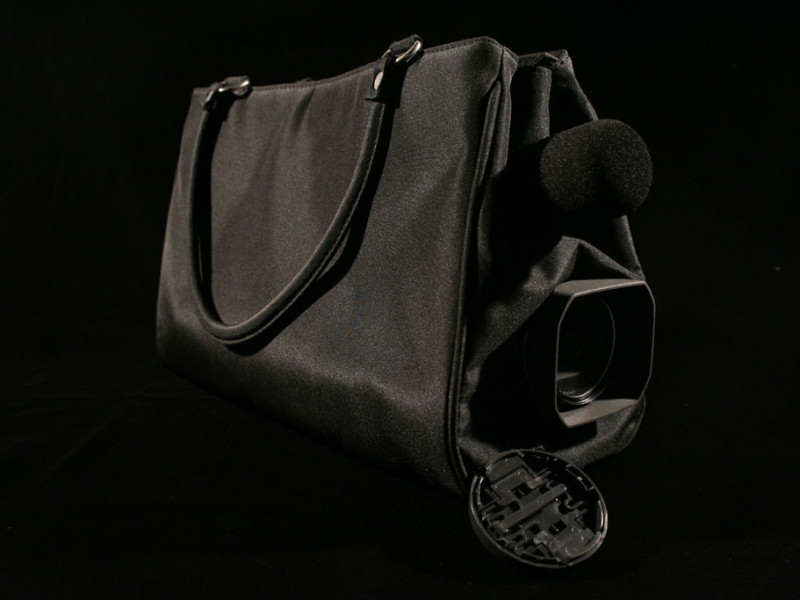
Kathleen Ritter, Hidden Camera, 2008. Pigment inkjet print. 122 x 91. 5 cm. Image courtesy of the artist. © Kathleen Ritter.
Website:
http://kathleenritter.com/
Hidden Camera
Artwork | Kathleen Ritter, 2008
Pigment inkjet print. 122 x 91. 5 cm | In multiple exhibitions, including “Wide Open,” Robert McLaughlin Gallery, Hamilton, ON, 2008, and “Sorting Daemons: Art, Surveillance Regimes and Social Control,” Agnes Etherington Art Centre, Kingston, ON
This project offers a photograph of a hidden camera device and microphone used by Ritter to record a number of her performance pieces that documented different public sites, including grocery stores and airports. In this way, Ritter questions the complex power structures inherent to the politics of seeing/seen and visibility/invisibility in public spheres.Website:
http://kathleenritter.com/